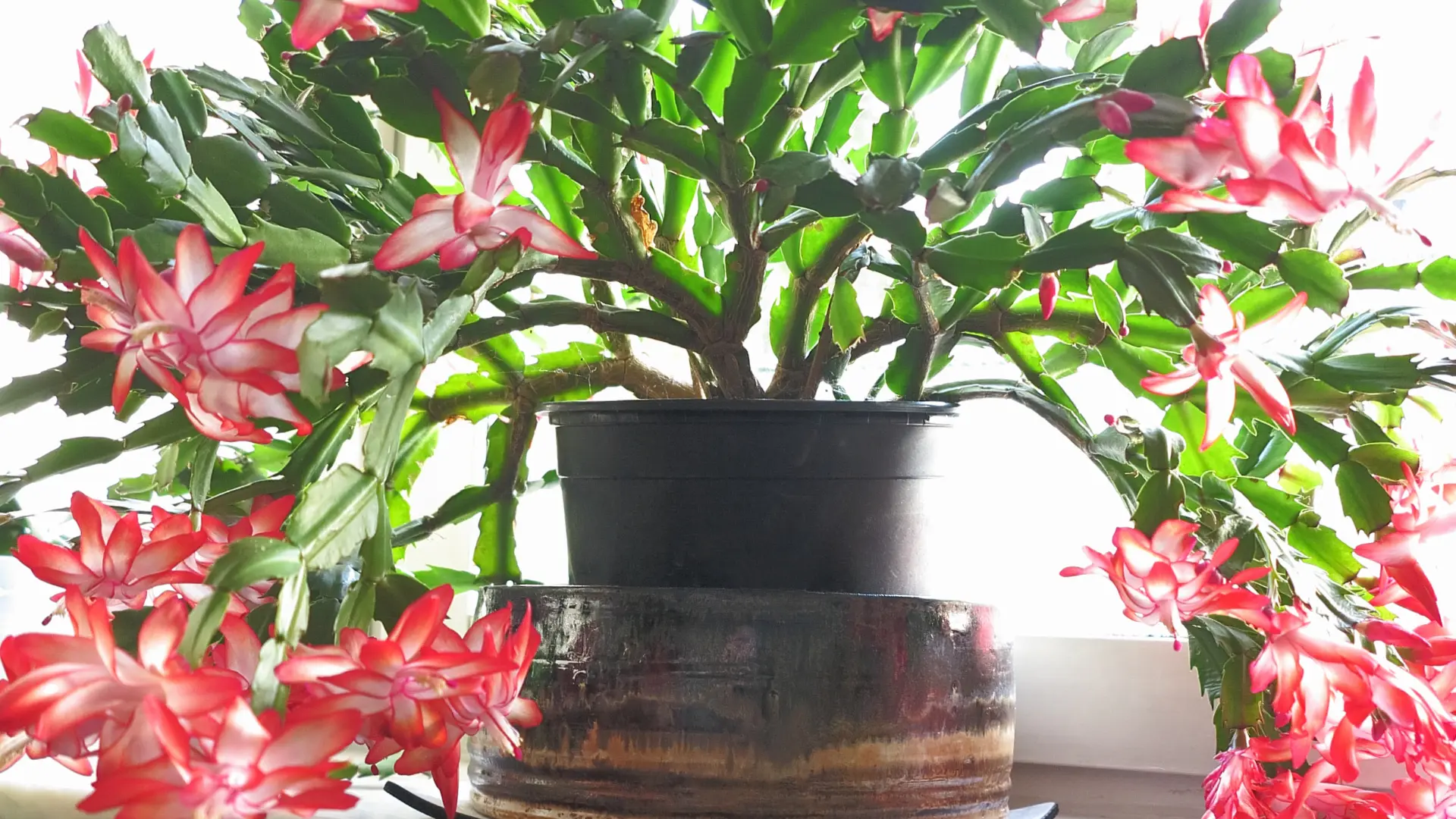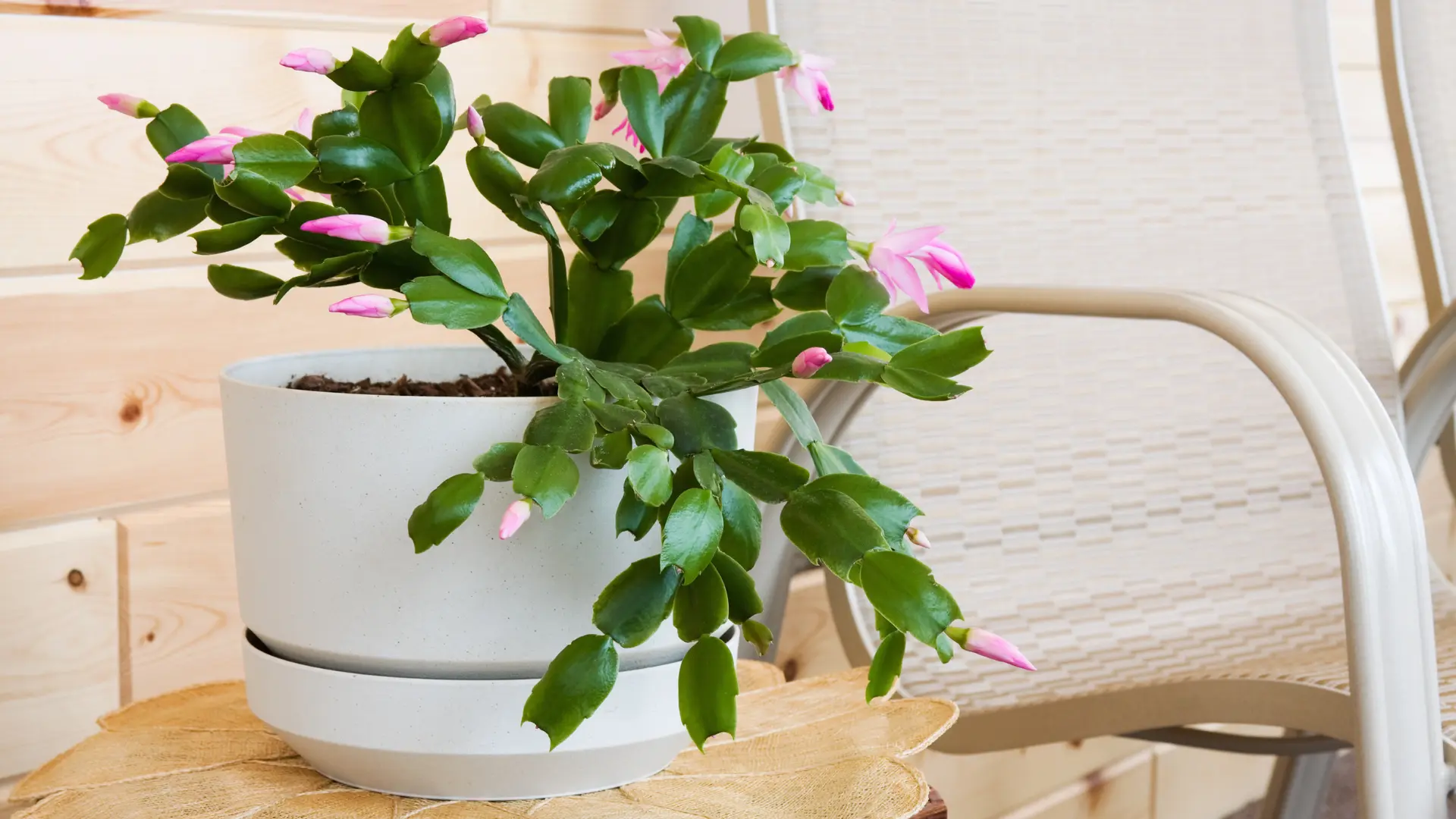I remember when I got my first Christmas cactus as a gift. I loved it so much for its unusual leaves and the way it bloomed seemingly effortlessly during the holidays. Now, I have almost half a dozen of them in my sunroom, and my love for them has not waned a bit. I mean, what’s not to love?
Christmas cacti are beloved for their cheerful blooms in colors of white, red, pink, purple, orange, and lavender. If you are looking for festive greenery to decorate your house with during the holidays, you can never go wrong with Christmas cacti, along with poinsettia, amaryllis, and rosemary.
Christmas cacti are thoughtful gifts and can survive for decades, adding color to your holidays for possibly more than one generation.
How Long Does the Christmas Cactus Take to Bloom?

If grown under the best conditions, a Christmas cactus plant will start blooming 18 months after planting from seed.
When does Christmas Cactus Bloom?
Christmas cactus, also known as Thanksgiving or holiday cactus, blooms in fall or early winter.
The blooms begin to come in the early days of November to January.
How Long Do Christmas Cactus Blooms Last?
Each flower should stay open for five to seven days, depending on the climate. The warmer the area, the faster the blooms will fade.
Christmas cactuses bloom in stages, so the flowering period should last for three to six weeks.
How to Care for a Blooming Christmas Cactus
There are ways to keep your blooming Christmas cactus healthy and full of its lovely flowers. Whether you’re a novice gardener or a green thumb, this little information will not go amiss.
Maximize your plant’s blooming by paying attention to these key factors.
Temperature
Christmas cacti can be a bit picky when it comes to temperature. You should maintain a temperature of between 55 to 65 degrees Fahrenheit.
Keep your plant in a humid environment especially needed during these dry winter conditions. Either mist the plant or place a pebble tray underneath the pot.
Water
Keep the soil evenly moist when your plant is blooming. Water thoroughly until the excess liquid begins to run out through the drainage holes.
Let the soil almost dry completely in between waterings.
Light
We know that Christmas cacti prefer partial shade or dappled light. But there is barely enough sunlight in winter to kill your plant.
So, you can expose it to full sunlight while it is blooming or place your Christmas cactus in an east-facing window for moderate full sun.
Fertilize
Once your plant starts blooming, apply a high-potassium fertilizer every two weeks to one month.
Use a half-strength, diluted, water-soluble fertilizer for better results.
How to Care For a Christmas Cactus After it has Finished Blooming
These simple steps will help your Christmas cactus grow and bloom better in the next year.
- Stop watering your plant for about a month after it stops blooming.
- Prune your Christmas cactus immediately after it stops blooming. You can start after a month. By then, all the blooms would have faded. Never prune after spring.
- You can propagate a new Christmas cactus from the stems you cut off if you want to increase your collection.
- Feed your Christmas cactus every two weeks or monthly with a liquid fertilizer at half-strength. Stop fertilizing in late summer or early fall.
- Repot every two to three years into the immediate next-sized pot. Christmas cacti flower more when they are a little root bound.
How to Get a Christmas Cactus to Bloom

For your Christmas cactus to bloom during the holidays, you might need to coax the flowers with these steps.
- In mid-October, reduce the amount of water you’re giving your Christmas cactus. Only water when the soil is dry an inch below the soil surface. Also, stop fertilizing.
- Keep your plant in cool temperatures of 50 to 55 degrees Fahrenheit. Start this 6 weeks before you want your Christmas to bloom.
- Give your plant eight to ten hours of indirect light during the day. Probably place your cactus in front of a window.
- At night, make sure it has uninterrupted periods of darkness of about 12 to 16 hours. The smallest amount of light can ruin all your hard work. Place your Christmas cactus in a dark cupboard or cover it with a dark cloth to be sure of total darkness.
- As long as you maintain the conditions of less water, moist soil, at least 12 hours of darkness at night, and cool temperature, the buds should form in about six weeks.
- Once the buds are formed, move your plant to a bright, draft-free window. The flowers will start opening after a few weeks.
My Christmas Cactus is not Blooming. What Can I do?
You’re driving or walking home, and you see that gardening-savvy neighbor arranging his perfectly blooming Christmas cacti in his house for the holidays.
You enter your home and see your plant not blooming, and it depresses you immediately. What have you done wrong? How can you fix it?
Several factors prevent a Christmas cactus from flowering. They include underwatering, low humidity, too much light, too large pots, wrong temperature, too much water, and too much fertilizer.
Contrary to what one might think from hearing the name for the first time, Christmas cacti are tropical plants.
They grew in a hot and humid environment with high rainfall and are shaded from full light by the canopy formed by tall trees.
This is different from most cacti that are adapted to drought and poor conditions because of their native home.
To encourage your Christmas cactus to bloom, you should:
- Increase your watering to around once a week and mist regularly to increase the humidity around your plant. Soak your plant generously when watering.
- As mentioned earlier, keep your Christmas cactus in total darkness throughout the night to promote blooms.
- Transplant your Christmas cactus into a smaller pot that is slightly larger than the root ball. The restriction will promote blooming.
- Keep your plant nice and cool during bud formation to give it the best shot at flowering.
- Place your plant in an area that gives bright but indirect light. This will give the plant enough energy to flower but not suffer sunburn or drought.
- Applying fertilizer during the period of bud formation will prevent flowering or flower-dropping. Avoid fertilizing from late summer for optimal bud formation and brighter flowers.
